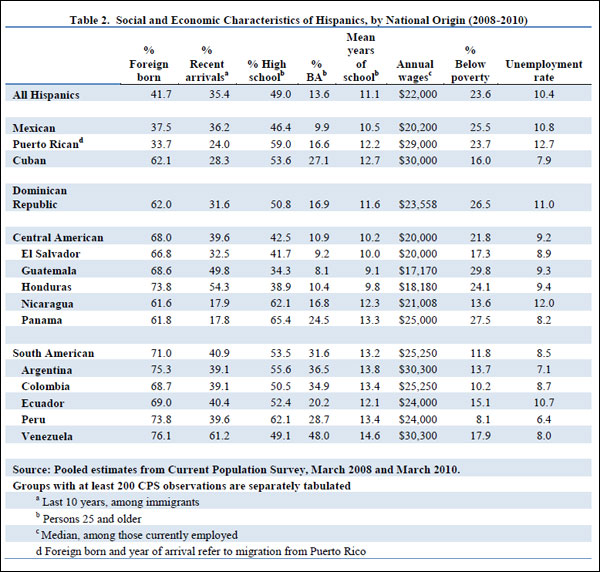One issue that inevitably emerges within the immigration debate in the United States is the degree to which new arrivals, particularly Hispanics, are integrating into American society in terms of residential patterns, language-learning and general cultural norms. As national debate over immigration laws and unauthorized immigrants continues, it is essential to acknowledge the changing and nuanced dynamics of the populations in question. Moreover, a better understanding of the U.S. Hispanic population — some 52 million people, as of 2011 — can help inform the debate and upend stereotypes about Latinos being some sort of cultural “monolith.”
A March 2013 report from scholars John R. Logan and Richard N. Turner of Brown University, “Hispanics in the United States: Not Only Mexicans,” provides a detailed statistical look at subpopulations within the general Latino community, as well as various socioeconomic measures of particular groups and their relative levels of integration and isolation within American society. The research, sponsored by the Russell Sage Foundation and Brown’s American Communities Project (see their US2010 project for more data and studies), analyzes Census data and reveals significant differences among communities of different national origin.
Key findings include:
- As of 2010, Mexican-Americans made up about 60% of Hispanics (about 32 million), but they are not the fastest growing group in recent decades. The groups whose numbers have tripled or more over the period 1990-2010 include: Hondurans, whose numbers have grown 383% (633,000 persons); Guatemalans, up 289% (more than 1 million); and Peruvians, up 204% (more than 500,000).
- These individual statistical trends constitute a larger pattern, the scholars say: “Groups that we refer to as the New Latinos — Dominicans, Central and South Americans — are growing even faster than Mexicans. They numbered under 3 million in 1990, 5 million in 2000 and now over 8 million. This represents a growth rate of 184% since 1990. Central Americans taken together are nearly half of New Latinos, and their number has more than tripled since 1990.”
- Several surprising facts emerge about the regional distribution of Hispanic groups across the United States, the authors note: “Chicago is the metropolitan region with the fourth highest number of Mexican residents (1.3 million).… Although the number of Mexicans in Los Angeles-Long Beach continues to grow, its share of the national total has dropped from 18.8% to 11.0%. Other metros in the top five have gained slightly, but over 70% of Mexicans are now spread into other parts of the country.”
- Furthermore, “The fast-growing Central American population is found in several growth poles around the country. The largest is Los Angeles, with 675,000 Central Americans. Washington, D.C.; Houston; New York; and Miami all have over 200,000 Central Americans, up fourfold in the first two of these metros and doubling since 1990 in the latter two. Yet this is another example of regional dispersion over time. L.A., N.Y. and Miami accounted for 53% of Central Americans in 1990, but now only 28%.”
- Although overall social science measures of social isolation — the degree to which Hispanics are segregated from whites and other groups — appear to be relatively constant over time, the reality is that isolation declined for all groups except Mexicans. “A more complete conclusion is that Mexican segregation from whites is persistent, but that other groups are experiencing much more integration with whites.”
There is significant variation in education levels and socioeconomic status among these communities. The following chart, excerpted from the Brown report, illustrates key data along these measures:

Tags: Latinos, Hispanics

Expert Commentary